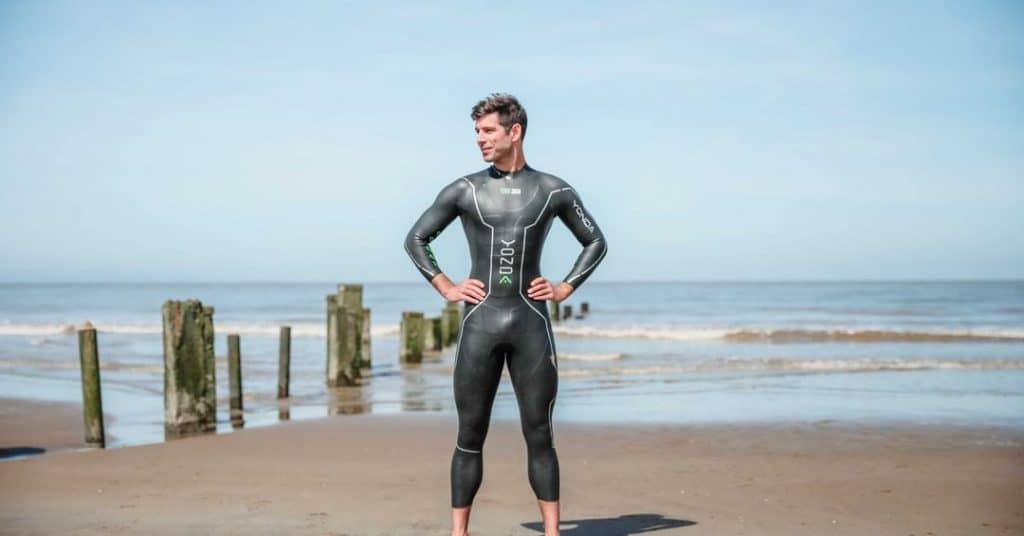Getting The Most From Open Water Swim Training

Swim training is exactly the same as run or bike training. Do plenty of variety in the effort, and you’ll get quicker!
Of course, swimming has more of a technical element – but that can be accounted for with drills, built into warm-ups and cool-downs, all about swimming mindfully.
When it comes to swimming in open water, this is where things can get a bit more interesting – or challenging – depending on who you are! How can you get the most from your open water swims – when you may be very limited in time or opportunity to get in the water.
First things first, safety has to be paramount. Make sure that you know the area that you are swimming in. If it’s a lake make sure that you know the depth, if it’s a river make sure you understand the currents, and be aware of any craft, or fishermen on the banks. In the sea, it’s key to know the tides – the times and the directions. In all cases, ensure that you are not swimming completely alone, or at least without some kind of fluorescent tow buoy.
Swimming with a tow float isn’t going to affect your swim particularly. Because of the buoyancy, it’s not going to add resistance, it shouldn’t impact your stroke because it’s not attached tightly. As a result, they are a perfect way to help stay safe, stay visible and even store valuables.

Is There A Minimum Time To Be A Useful Swim?
As with all questions, the answer to this is “it depends”.
The short answer is no, not really. If you are someone who needs open water swim practice, then any time that you can spend in your wetsuit is going to be helpful. Of course, having a cursory dip of your toe in the water isn’t going to help you very much, but even 5-10 minutes at a time (done regularly) can help build up confidence and an affinity to the unknown.
That said, if you are a more experienced swimmer, finding the time to swim for 30 minutes or more at any one time is definitely going to have a bigger and more positive impact on your swimming. As with all training, swimming mindfully is the key to getting the best from it all.
What’s A Good Open Water Swim Session?
Depending on how often you are getting in open water, there are all sorts of things that you can do with your wetsuit swim sessions. If you’re only doing the odd swim, swimming steady, cruising along and focusing on executing open water skills (starts, turns, sighting) can be a decent use of time.
However, if you’re swimming a large percentage of your training outdoors, “just” swimming steadily is going to leave you with only one pace, and not gaining much from your sessions. In the same way that you would in the pool, it’s good to break up your session with blocks of different intensity.
Breaking up sessions could take the form of blocks of time, or the number of strokes, or sections of a course in your open water venue. While you’re doing your swimming, you could include blocks of 30 strokes at race intensity/effort. Or you could do sets of 2-4 minutes (set an alarm on your watch) at varying efforts.
Whatever you do, swim with intent, swim mindfully and try not to just plough the water aimlessly. Otherwise, the session becomes only very slightly useful – and this is where people begin to wonder why they aren’t improving.

Should I Be Doing Drills In Open Water?
Drills aren’t going to have the same effect in open water as they do in the pool. Swimming open water is a bit like running on trails – because the water is moving around you more, and is less stable, you don’t have quite the same opportunity to keep your stroke even and consistent.
That said, it doesn’t mean that you can’t do drills at all. My favourite way of incorporating a technical element into open water swims is to do 10 strokes past particular markers or buoys as a drill to really focus the mind. This could be a few sculls to think about controlling the water, catch up to concentrate on keeping your stroke smooth, or even head up swimming to drill in your sighting technique.
Whatever drill you are doing, make sure that you know WHY you are doing it. It doesn’t have to be done perfectly, but if you don’t know why you’re doing a particular exercise, you definitely won’t get the maximum from it.
By the same token, if the water is rough (especially in the sea), sometimes it’s about learning how to control yourself and your swimming under those conditions. Ideally, you want to swim as smoothly and as strong as possible, but some days that just isn’t an option. Remembering that race day could be like that, surviving tough sessions can be a good learning process!
Sometimes open water swims – and especially sea swims – can get really rough, or at least uncomfortable. If you have to revert to doing breaststroke so that you can breathe, or sight, or just get your mind back together and feel calm, there is absolutely nothing wrong with that. It’s not ideal – of course. But learning what can help you find your happy place is a key part of any training.
When you decide on what swim you intend to do, sometimes you will have to take into account of where you are swimming. It might be a case that you want to do laps of a small, more still area so that you can think of your form a little more and concentrate on applying pressure to the water.
Or you might look at the water conditions, see that it’s wavy, and decide that you want to do a session where you tame the elements and work on progressing in any situation.
Is Kit Choice Important?
Getting a wetsuit that fits you properly is massively important. It doesn’t have to be super expensive, but getting a specific swim/tri wetsuit will be a lot easier to swim in than a surf wetsuit.
A surfing wetsuit won’t cause you injury – and will certainly keep you safe and warm – but with minimal flexibility around the shoulder area, they will add fatigue to your swim and make your technique feel considerably harder to work on.

When putting on your wetsuit, putting it on properly is key. Pull the inside of the leg “inside out” so that you can grip the inside of the knee – this will make it easier to pull the suit up your legs. If you have particularly large feet, it might be worth putting some socks on or even a plastic bag over your feet to help the suit slide over them.
Once the suit is up to the knees, you should be able to roll it up the thigh much easier. Ensuring the suit is pulled properly up into your groin area is imperative to making sure that you’ll have enough material up over your shoulders. Oftentimes people in very flexible wetsuits struggle with a range of motion around the shoulders because the suit isn’t pulled up far enough.
If you have any questions or comments, please feel free to get in touch; either by email, Facebook or leave a comment on here! Remember, you can always get your swimming reviewed in the endless pool with our video swim analysis packages.
